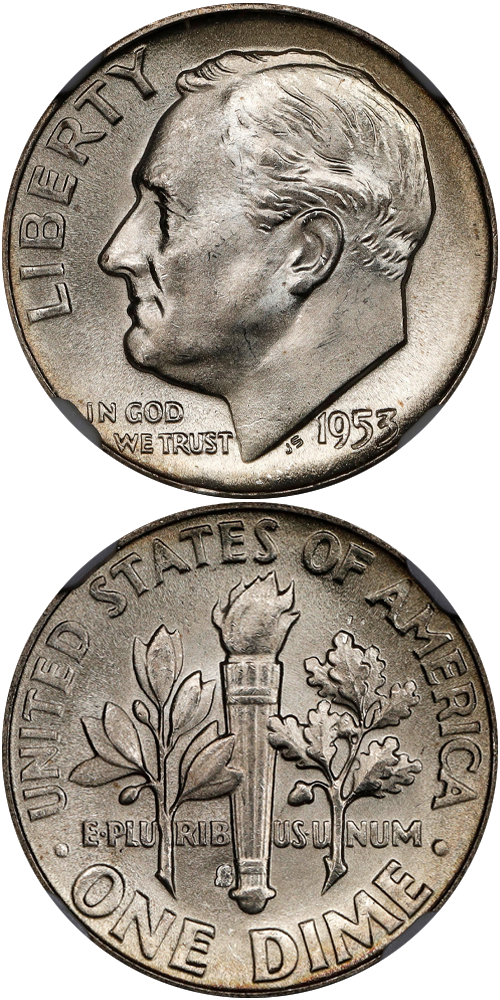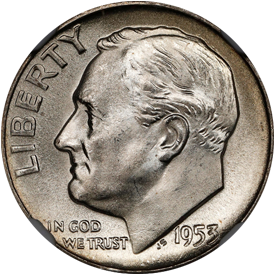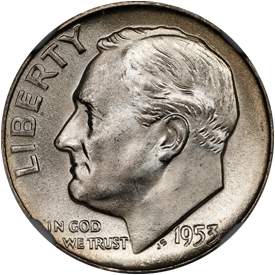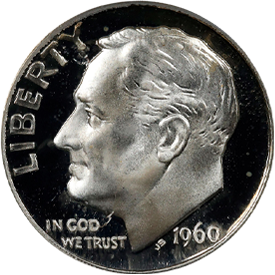Designed by: John R. Sinnock
Issue Dates: 1946-1964
Composition: 90% silver, 10% copper
Diameter: 17.9 mm
Weight: 2.50 grams (38.58 grains)
Edge: Reeded
Business Strike Mintage: 6,595,617,673
Proof Mintage: 19,837,717
After the death of President Franklin D. Roosevelt in 1945 it was decided to redesign the so-called Mercury dime to reflect the former president's portrait. The dime denomination was selected because Roosevelt had a close association with the March of Dimes charity fundraising over a long period of years. John R. Sinnock, chief engraver at the Philadelphia Mint, produced a portrait showing the head of Roosevelt facing left, with LIBERTY at the left side of the coin, IN GOD WE TRUST below his chin, and the date to the lower right. The reverse depicts a torch with branches to each side, with UNITED STATES OF AMERICA and ONE DIME around the borders. E PLURIBUS UNUM is placed among the branch stems and torch base.
In the alloy of 0.900 part silver and 0.100 part copper, the design was produced from 1946 through 1964, after which time the alloy was changed. Production was accomplished at the Philadelphia, Denver, and San Francisco mints. Proofs were made at Philadelphia from 1950 through 1964.
The type collector will have no difficulty obtaining an example in any grade desired from Very Fine to superb Uncirculated. In addition, Proofs survive in large quantities.
Full Bands
About 20 years or so ago, some collectors began searching for, and paying a premium price for Roosevelt times with full separation on the bands seen on the torch. In response to this interest, the grading services added the FB (PCGS) or FT (NGC) designation to Roosevelt dimes. Note that both the upper and lower set of bands must show full separation to qualify for the designation.
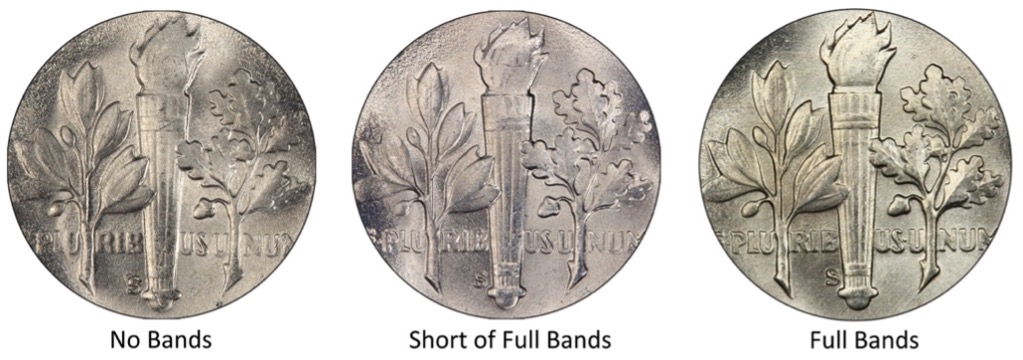
Further Reading
Roosevelt dimes have been coined regularly since 1946. There are few issues which can be considered "scarce" in the relative sense of the term, as applied to modern issues, with 1949-S being paramount in this regard.
When the Roosevelt dime first appeared the 'JS" initials of the engraver, John R. Sinnock, were believed by some to represent Joseph Stalin (for some stupid reason!). The use of the dime denomination to perpetuate the memory of President Roosevelt was particularly significant as Roosevelt was active in the March of Dimes campaign against polio, an illness with which the late president was afflicted.
